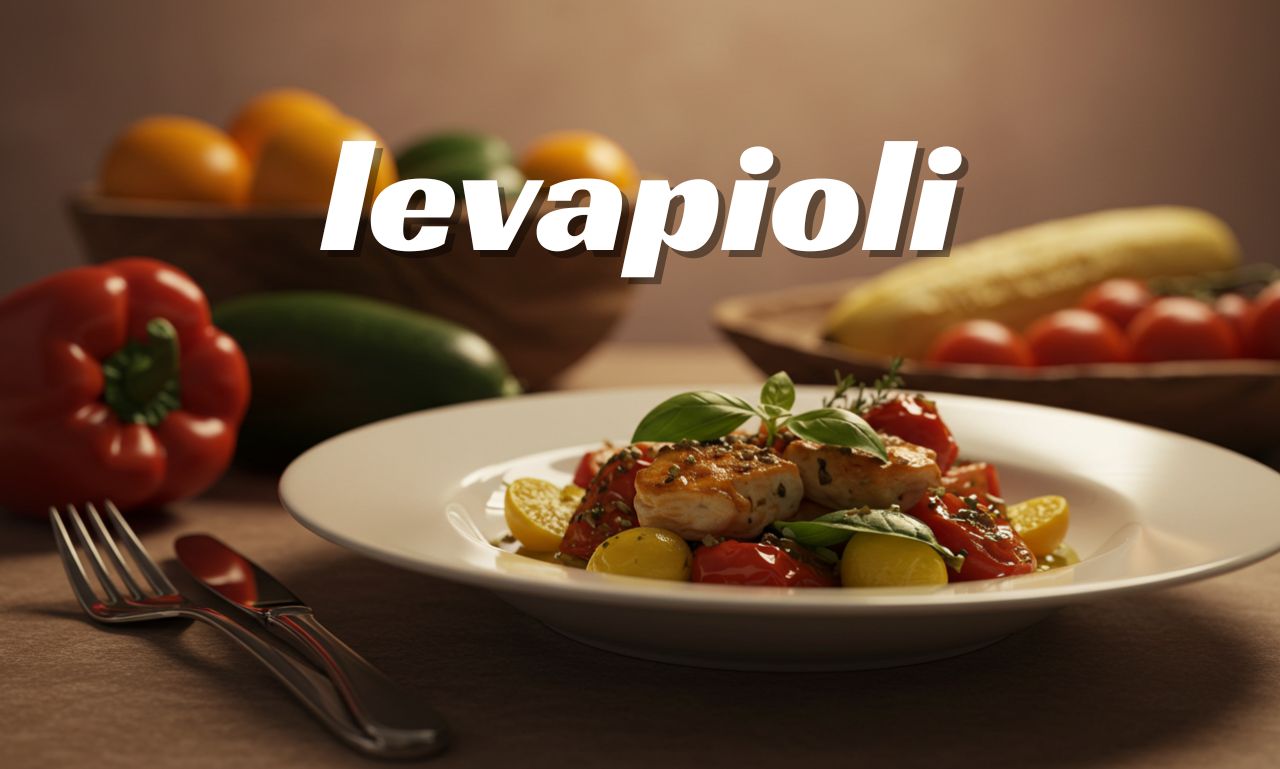Step into the world of levapioli, a culinary delight that bridges tradition and flavor with every bite. This dish isn’t just food; it’s a celebration of cultural heritage and craftsmanship. With roots deeply embedded in history, levapioli offers an irresistible taste experience that has transcended generations. Whether you’re a seasoned chef or just exploring new dishes, there’s something about levapioli that calls to the adventurous spirit in all of us. Get ready to embark on a delicious journey as we uncover what makes this dish so special!
What is levapioli?
Levapioli is a delightful culinary creation that brings together rich flavors and cultural heritage. This dish consists of small, grilled meat patties, traditionally made from minced beef or lamb.
What sets levapioli apart is its unique blend of spices and herbs. Each region boasts variations that showcase local ingredients and tastes, making it a versatile favorite across different tables.
Often served in warm flatbreads, the succulent patties are accompanied by fresh vegetables like onions and peppers. A drizzle of tangy sauce elevates the experience further.
The beauty of levapioli lies not just in its taste but also in the communal way it’s enjoyed. Sharing this dish with family or friends transforms any meal into a celebration filled with laughter and connection.
The History and Origins of Levapioli
Levapioli has a rich tapestry woven through centuries of culinary tradition. Its roots trace back to the Balkans, where it emerged as a staple food among local communities.
The dish reflects the region’s cultural diversity, influenced by Ottoman and Mediterranean cuisines. Initially crafted from simple ingredients, it quickly became beloved for its comforting flavors.
Historically, levapioli served not just as sustenance but also as a symbol of hospitality. Families would gather around communal grills, sharing stories and laughter over sizzling skewers of meat.
As migration spread this delightful dish across borders, each area infused its unique twist into the recipe. Today’s variations showcase regional spices and techniques that honor levapioli’s storied past while inviting new interpretations.
Traditional Ingredients Used in Levapioli
Levapioli is a celebration of traditional flavors. The heart of this dish lies in its ingredients, each chosen for their unique characteristics.
Ground meat forms the foundation. Typically, lamb or beef is used, offering rich and savory notes. Quality matters here; fresh ingredients make all the difference.
Spices are essential to elevating levapioli’s taste profile. A careful blend of garlic, paprika, and pepper infuses warmth and depth into every bite.
Fresh herbs like parsley bring brightness and balance. They cut through the richness while adding a touch of color to the final presentation.
Another key component is flatbread or pita, which serves as both vessel and accompaniment for these flavorful fillings. This pairing creates a delightful contrast in texture that enhances the overall experience.
Together, these traditional ingredients create not just a meal but an experience steeped in culture and history.
Modern Twists on Classic Levapioli Recipes
Modern chefs are reinventing levapioli, blending tradition with innovation. Creative minds experiment with unique fillings and flavor profiles to keep the dish exciting.
Imagine a spicy harissa-infused meat blend wrapped in traditional dough. This twist adds heat while respecting the roots of levapioli.
Vegetarian variations have also emerged, using lentils and quinoa seasoned with herbs for an earthy taste. These options cater to diverse dietary preferences without sacrificing authenticity.
Fusion cuisine takes levapioli further; think Asian-inspired versions featuring sesame oil and ginger. The result is a delightful cross-cultural experience that surprises the palate.
Sauces play a crucial role too. Chefs drizzle tangy yogurt or zesty chimichurri over their creations, enhancing each bite’s complexity.
These modern interpretations celebrate culinary creativity while honoring the rich heritage of this beloved dish, making it relevant to today’s food lovers.
Tips for Making the Perfect Levapioli
Start with quality meat. Choose a blend of ground beef and pork for the best flavor. The fat content is key to keeping your levapioli juicy.
Season generously. Salt, pepper, and fresh herbs are essential. Don’t shy away from garlic or onion; they add depth.
Use your hands to mix everything together gently. Overworking the meat can lead to tough results. Form into uniform shapes for even cooking.
When grilling, keep an eye on temperature. Medium-high heat ensures that you achieve a nice sear while cooking through without drying out.
For added flavor, consider marinating your levapioli in olive oil and spices before grilling them. This step elevates their taste significantly.
Let them rest after cooking for a few minutes. This allows juices to redistribute, resulting in every bite being incredibly flavorful and moist.
Popular Variations of Levapioli Around the World
Levapioli has found its way into many cuisines, each culture adding its own flair. In the Balkans, you might encounter a spicy twist with ajvar sauce that enhances the savory flavor of the meat.
Traveling to South America, particularly Brazil, you can taste levapioli infused with local spices like cumin and paprika. Here, it often gets served alongside rice and beans for a hearty meal.
In Italy, chefs may experiment by incorporating herbs such as basil or oregano into their recipes. This adaptation highlights fresh flavors while maintaining traditional roots.
Meanwhile, in North America, food trucks are popularizing gourmet versions of levapioli. Toppings can include everything from avocado slices to pickled onions—making each bite a unique experience.
Each variation tells a story of cultural exchange and creativity in the kitchen. The beauty lies in how a simple dish evolves while still honoring its origins.
How to Incorporate Levapioli into Your Daily Life
Incorporating levapioli into your daily routine can be both fun and tasty. Start with a simple breakfast twist. Try adding chopped, grilled levapioli to scrambled eggs for a hearty morning meal.
Lunch is another great opportunity. Toss some slices in a fresh salad or wrap them in pita bread with veggies and sauces of your choice. This brings a delightful fusion of flavors that will keep you satisfied.
For dinner, consider serving levapioli as the star protein on your plate. Pair it with roasted vegetables or rice for a filling dish. You can also use it in pasta dishes or stir-fries for an unexpected kick.
Don’t forget about snacks! Levapioli makes an excellent addition to charcuterie boards, alongside cheeses and olives. Its savory profile complements various flavors beautifully, making every bite enjoyable throughout the day.
Conclusion: Keeping Tradition Alive Through the Deliciousness of Levapioli
Levapioli is more than just a dish; it’s a celebration of culture and heritage. As you explore this delightful culinary creation, you’re not only indulging in rich flavors but also connecting with the stories and traditions that have shaped its evolution over time. Whether you choose to stick with classic recipes or experiment with modern twists, each bite is a testament to the craftsmanship involved.
Incorporating levapioli into your everyday meals can elevate your dining experience and introduce friends and family to something truly special. Embrace the variations found across different cultures, allowing you to enjoy levapioli in new ways while respecting its roots.
By sharing these experiences around the table, we contribute to keeping this beautiful tradition alive for generations to come. So why not embark on your own delicious journey? Delight in making levapioli at home or savoring it from local eateries as you discover all that this remarkable dish has to offer.

